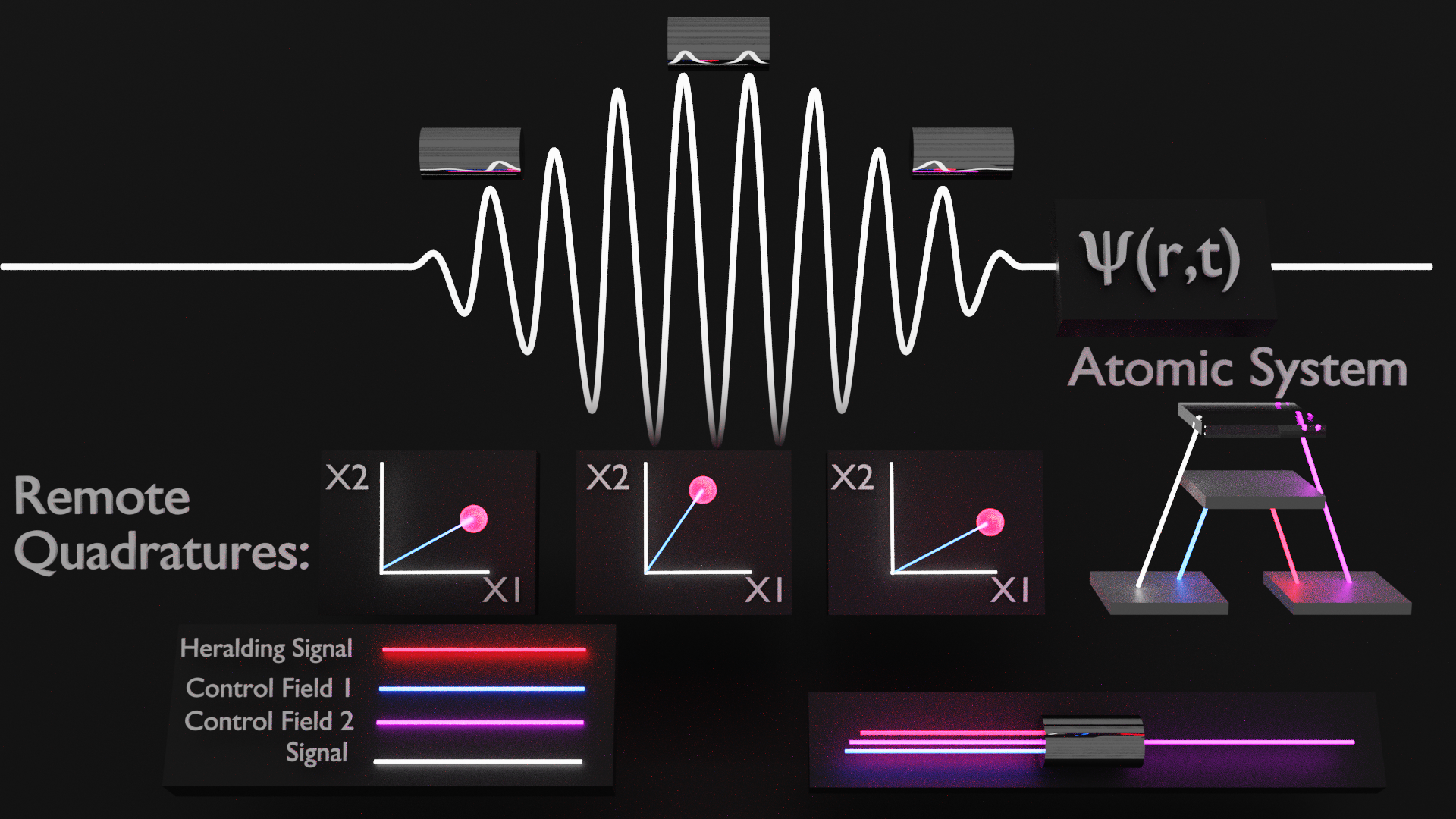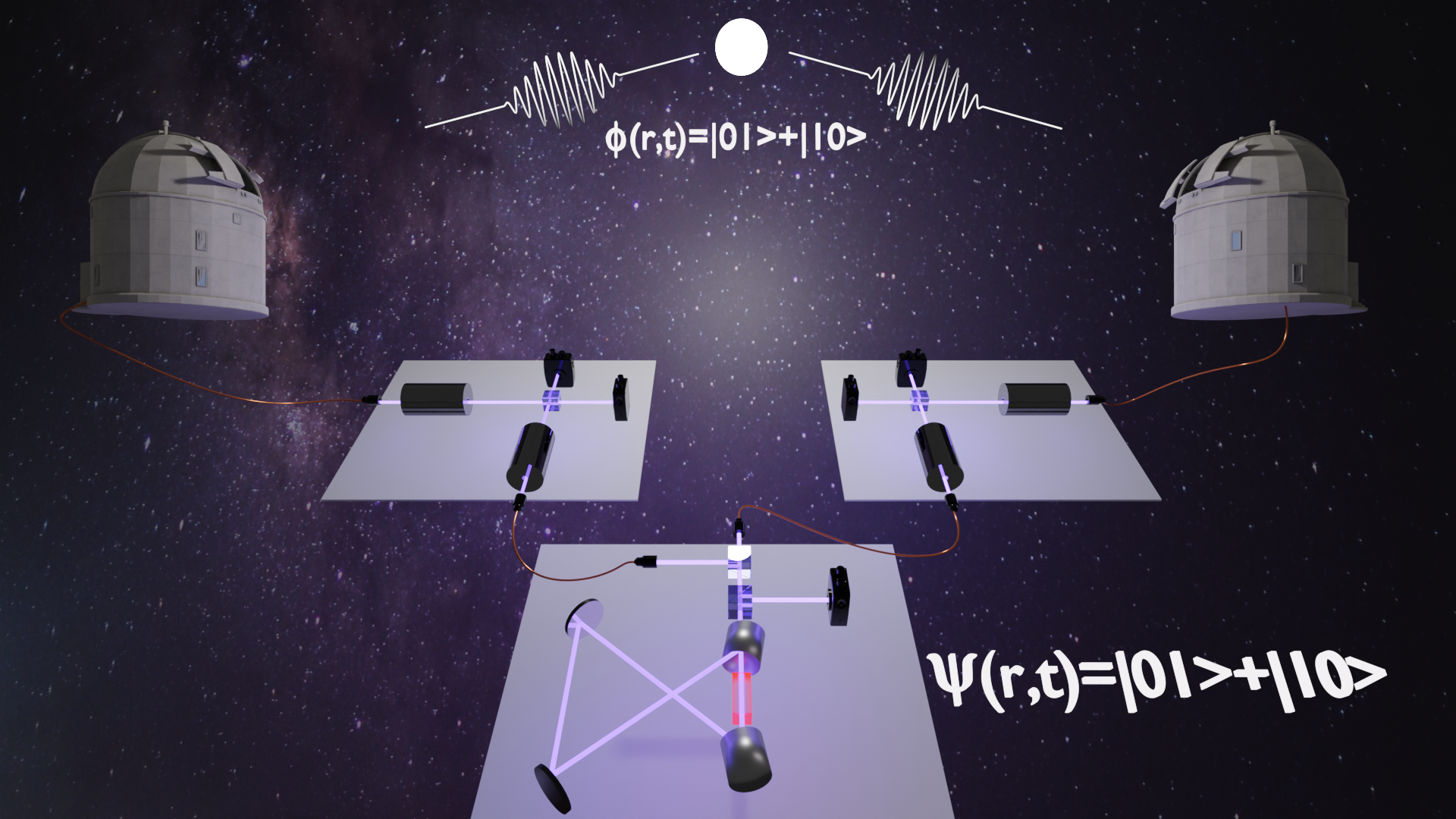Networked Quantum Sensing
In collaboration with the Instrumentation Division of the Brookhaven National Laboratory, we study applications of quantum networks and entanglement distribution for quantum sensing, among them:
Long-base-line particle detection
Entanglement distribution in a quantum internet of quantum devices can enhance optical interferometric observations, providing a quantum advantage in resolution. The use of distributed matter-matter entanglement creates large line-of-sight arrays of entangled sensors with quantum advantages in sensitivity, as well as prepares entangled matter nodes into clock-sensitive states. A quantum network of atomic clocks can be created to reach the Heisenberg quantum limit in precision. We are developing the quantum network infrastructure to develop distributed atomic quantum sensors based upon atomic quantum memories. Here, a long baseline wave function is measured simultaneously (locally) by several light-matter interfaces (quantum memories). The quantum non-demolition measurement of the local probability of finding the particle at the memory location is executed through a non-local nonlinear photon-photon interaction, which modifies the state of sensing photons that are applied constantly to the memory. Characterizing very precisely this sensing signature it is thus paramount to estimate the extended wave function, this is done by performing measurements across a network of quantum memories.

Concept of long-baseline particle detection using networked systems of heralded quantum memory systems.
Quantum Astronomy
Improving angular resolution in astronomical instrumentation has long been pursued in order to advance many subfields of astronomy. Although traditional optical interferometry is a well-established, successful astronomical technique, the optical path between different detection stations, required to interfere photons, limits the achievable baselines to hundreds of meters. We are developing a novel type of optical interferometer that utilizes quantum mechanical two-photon interference effects and can improve astrometric precision by orders of magnitude. The first photon will be a sky photon from a bright star and the second photon will come from a SPDC source. The main feature of the proposed interferometer is that it bypasses the traditional necessity of establishing a live, phase-stabilized optical path connecting detection sites, so the baseline distance can be made arbitrarily large. Consequently, an improvement of several orders of magnitude in angular resolution is in principle attainable.
These ideas overlap with the Hanbury-Brown & Twiss intensity correlation technique in astrometry, which can measure stellar diameters by employing two-photon enhancement effects. There are many scientific opportunities that would benefit from substantial improvements in astrometric precision. To list just a few: testing theories of gravity by direct imaging of black hole accretion discs, measuring ultra--high-precision parallaxes to calibrate the cosmic distance ladder, mapping microlensing events, and measuring peculiar motions of stars to understand the distribution of dark matter. These ideas offer a compelling new way forward based on quantum information science: one that is much lower in cost, one that can be multiplexed to yield signal-to-noise ratios comparable or superior to amplitude-based interferometers, and finally, one that does not require light from stations to interfere at a common location (leading to longer baselines and higher image resolution).

Concept of a quantum astrometry measurement using entanglement generation, distribution, quantum memory storage and interference with sky photons.
